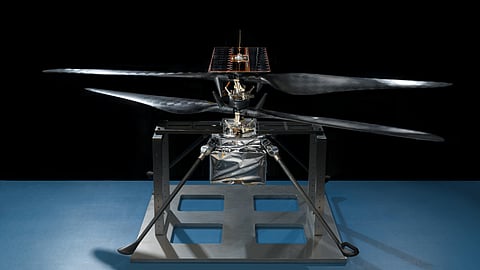NASA's Mars Helicopter flight demonstration project has passed a number of key tests with flying colors.
In 2021, the small, autonomous helicopter will be the first vehicle in history to attempt to establish the viability of heavier-than-air vehicles flying on another planet.
Said MiMi Aung, project manager for the Mars Helicopter at NASA's Jet Propulsion Laboratory in Pasadena, California: "Nobody's built a Mars Helicopter before, so we are continuously entering new territory. Our flight model - the actual vehicle that will travel to Mars - has recently passed several important tests."
Back in January 2019 the team operated the flight model in a simulated Martian environment.
Then the helicopter was moved to Lockheed Martin Space in Denver for compatibility testing with the Mars Helicopter Delivery System, which will hold the 4-pound (1.8-kilogram) spacecraft against the belly of the Mars 2020 rover during launch and interplanetary cruise before deploying it onto the surface of Mars after landing.
As a technology demonstrator, the Mars Helicopter carries no science instruments. Its purpose is to confirm that powered flight in the tenuous Martian atmosphere (which has 1% the density of Earth's) is possible and that it can be controlled from Earth over large interplanetary distances.
Virgin Galactic Makes Historic Space Flight
But the helicopter also carries a camera capable of providing high-resolution color images to further demonstrate the vehicle's potential for documenting the Red Planet.
Future Mars missions could enlist second-generation helicopters to add an aerial dimension to their explorations.
They could investigate previously unvisited or difficult-to-reach destinations such as cliffs, caves and deep craters, act as scouts for human crews or carry small payloads from one location to another. But before any of that happens, a test vehicle has to prove it is possible.
The Mars Helicopter will launch with the Mars 2020 rover on a United Launch Alliance Atlas V rocket in July 2020 from Space Launch Complex 41 at Cape Canaveral Air Force Station, Florida.
When it lands in Jezero Crater on Feb. 18, 2021, the rover will also be the first spacecraft in the history of planetary exploration with the ability to accurately retarget its point of touchdown during the landing sequence.
Read More: Dawn of New Era in Human Space Flight


